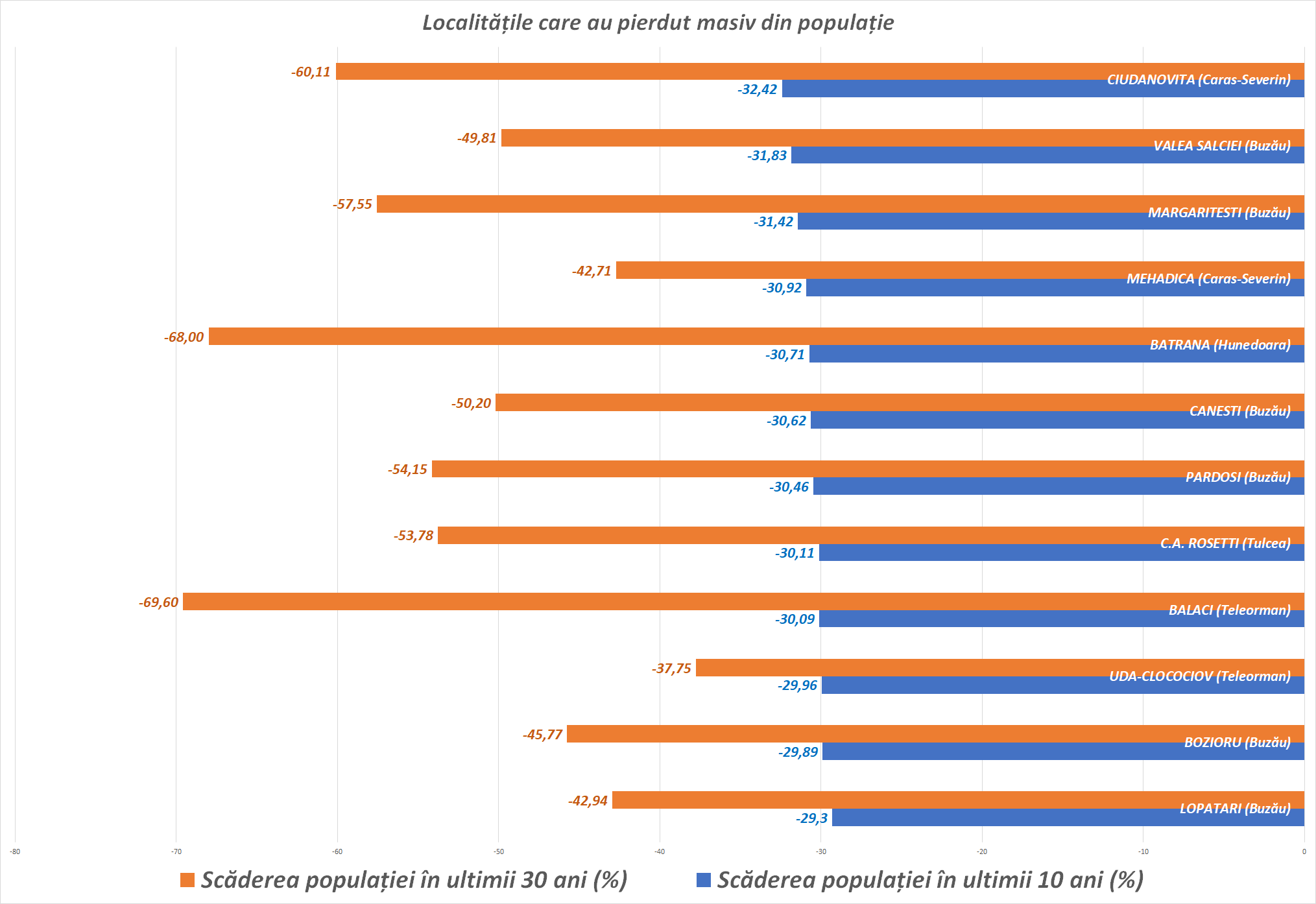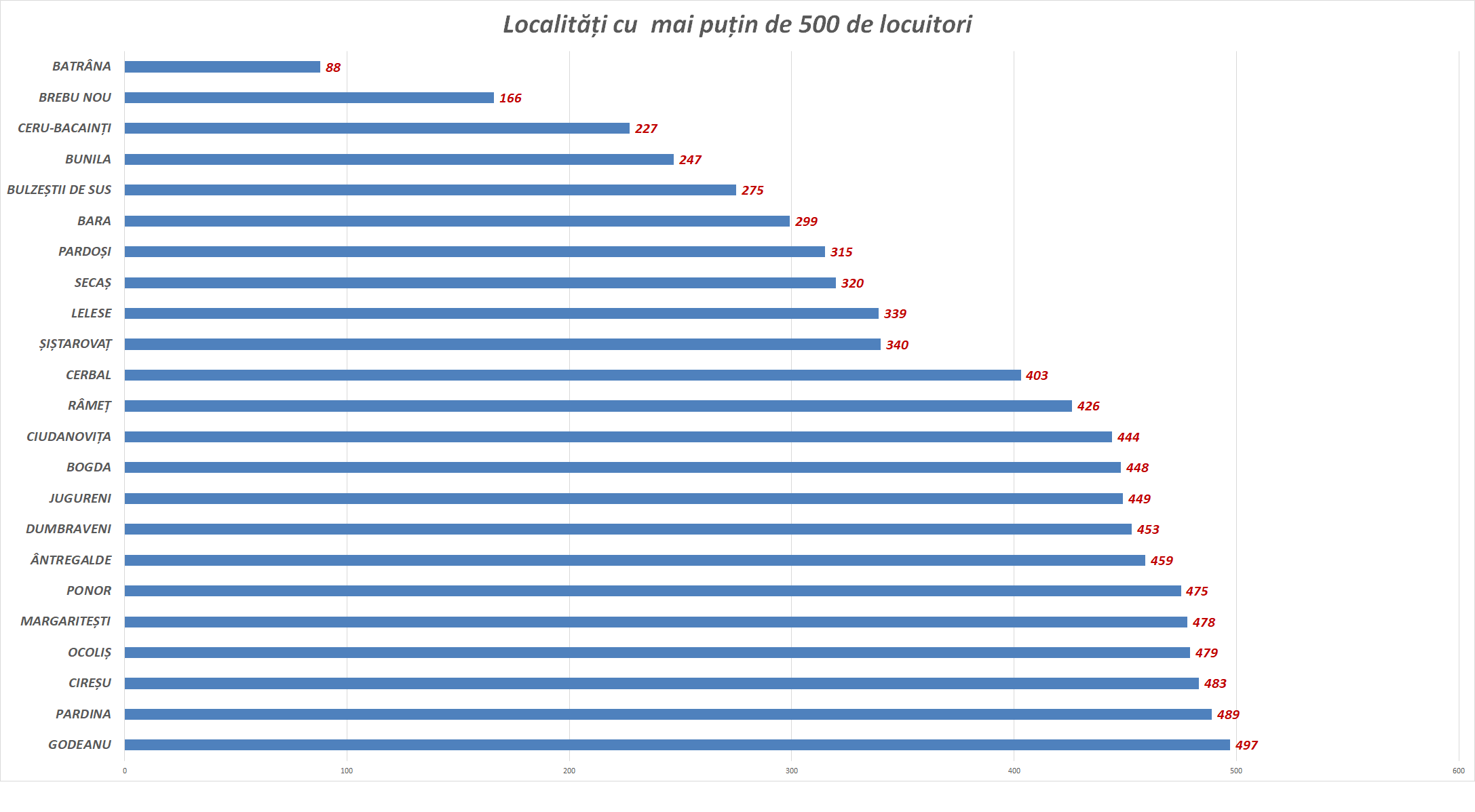
Of the first 12 settlements in Romania, where a strong outflow of population is registered, half – from Buzeu. It goes massively from there; one explanation could be the low level of wages and the ambitions of the mayor there are high: “I want Buzeul to become one of the best cities to live in Romania,” he says.
Ciudanovița – out of 1100 inhabitants, barely more than 500
As in many other places in Romania, there is really no place to work to earn money and raise a family. Therefore, it is not surprising that people go where they can see. There is no information on the city hall’s website, and the local development strategy is empty.
The former workers’ colony from Siudanovytsia, founded at the foot of the uranium mines in the Banat Mountains, has turned into a ghost town.
The commune of Siudanovica is located in the Karash-Severin County, about 20 kilometers from Oravica. During the communist regime, two uranium mines worked in this area: Ciudanoviţa and Lişava.
The mines in Sydanovica were opened and operated by the Russians as payment for some war debts. Thus, the population brought here from all regions of the country reached more than 10,000 people. People came because in exchange for hard work, they received high wages and food, which was in short supply in other areas. The activity continued until the end of the 90s, when the mines were finally closed, without being greened. Details here

The first 100 settlements on the depopulated list lost the equivalent of a more modest county (about 300,000 inhabitants).
Valya Salsiei (Buzeu) is in a similar situation. Out of more than 1000 inhabitants, it has less than 600.
We have more than 20 settlements smaller than a 10-story building in Bucharest
In more than 20 settlements, the population does not exceed 500 people, the most dramatic being Batrana, where 88 local residents live.

The city of Batrana in Hunedoar has been written about before. It is the smallest in the country, with 88 inhabitants.
The second is Brebu Nou, followed by Cheru-Bekeinzi from Alba County. Then we have Bunila, Bulzestey de Sous and others from the table above.
In fact, the smallest 100 settlements would fit together in a city the size of Slatina or Calaras, and the first smallest 1000 settlements would fit in Bucharest.
The bad part is that population decline is not good news for many reasons. One part explains them very well Barbu Mateescu, here.
Others were discussed by John Maynard Keynes in 1937 during his lecture on “The Economic Consequences of Population Decline.”
Almost 100 years ago, Keynes warned that population decline had dire economic consequences. Fewer people means less consumption, which means less production, which means high unemployment.
In fiscal terms, this means an increase in taxes, and in the field of the labor market – an increase in the retirement age. Exact what Krachun told the Council in a recent chat with HotNews.
In general, the decrease in the population of Romania, esp in the perspective of the next decades, should give the government nightmares. Let’s hope that all these data will be taken very seriously by the national political leaders.
Source: Hot News
Lori Barajas is an accomplished journalist, known for her insightful and thought-provoking writing on economy. She currently works as a writer at 247 news reel. With a passion for understanding the economy, Lori’s writing delves deep into the financial issues that matter most, providing readers with a unique perspective on current events.